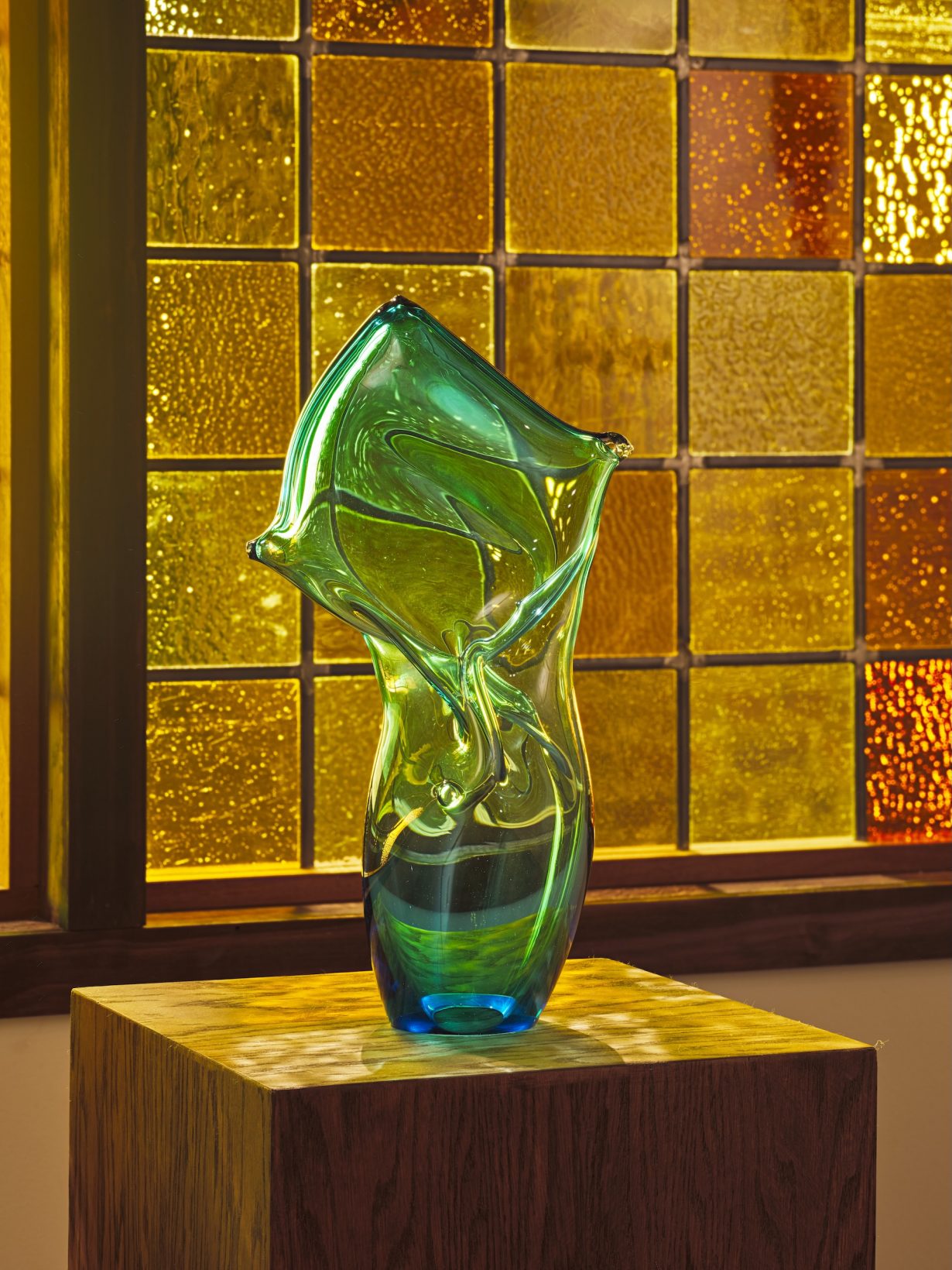In Monument Eternal, the artist falls endlessly towards the ground in a fraught exploration of the American landscape and its history of racial violence
Gravity is at the centre of Le’Andra LeSeur’s solo show, which pivots on the seven-minute film Monument Eternal (2024): standing on top of Stone Mountain, an isolated rock hill 20-some kilometres east of Atlanta – where LeSeur grew up – the artist repeatedly falls towards the mountain’s top surface in achingly slow motion. In doing so, she suspends us in the friction between Black corporeality, spirituality and land, between the actual and metaphysical ground of Blackness.
LeSeur’s performance is filmed above the colossal equestrian relief carved on the mountain’s north face (begun in 1915, completed in 1972), which commemorates Jefferson Davis, Robert E. Lee and Stonewall Jackson, Confederate leaders who fought to maintain slavery in the United States. The camera confronts the brute fact of the monument, lingering on it for several seconds. As it slowly zooms out – revealing more of the hulking mountain face, trees and sky – the monument becomes both grand and diminutive. Against such vast and ancient geology, the relative newness of white supremacy’s semiotic order is brought into sharp relief, appearing desperate and jarringly anachronistic.
The initial mood is set by a gospel rendition of ‘Nobody Knows the Troubles I’ve Seen’. Flush with the baroque yet melancholic aesthetics of Black religiosity, the song lends a churchly valence to the film’s overture. After this, a title frame flashes, and we find ourselves on top of the mountain looking up, for a moment, at the unobstructed sky and then at the back of LeSeur’s head. The music shifts to a spare drum beat, as LeSeur reads her poetry in voiceover: “I am a sanctuary that has been dancing to someone else’s rhythm,” she proclaims. “We can soften over time, we can float, we don’t have to break.”
One might argue, given LeSeur’s position above the stone carving, that the film is attempting to flip the hierarchies that the monument reifies. But as the artist begins her fall, she invites a more complicated reading. As the camera focuses on her shoulders, hair and folds of her simple white T-shirt, LeSeur surrenders her body to the air and the approaching rock-hard mountaintop, seemingly trusting that the land will catch her in spite of what the mountain has come to represent. She prompts us to ask: what does a ‘free fall’ imply when the ground also holds the history of your unfreedom?

Despite its compressed runtime, the film reads like a kind of durational performance. The visual surprise of the fall lies in the lack of acceleration: it is difficult, at first, to discern whether LeSeur is falling or hovering, her movement so slow as to be imperceptible. The film ends before her drift does, cutting to black just as LeSeur’s head is about to hit the rock: we never see the impact, inviting us to recall LeSeur’s insistence that “we don’t have to break”. Perhaps the ‘eternity’ invoked in the film’s title is not in the stony invention of white supremacy but rather in the abiding expression of Black countergravity.
A stained glass window is installed opposite the film projection. A soft place to land… (2024) is one of a number of works – including drawings and paintings – that complement the video. During the day, the window refracts a subtle gold light while the song plays. As this ethereal shine meshes with the fraught representations on the screen, we are reminded that Black spirituality cannot be disentangled from sites like Stone Mountain, from the land and the violent politics that have overwritten it, from the ‘trouble’ and ‘sorrow’ that so many bodies have seen.
Monument Eternal at Pioneer Works, New York, through 15 December
